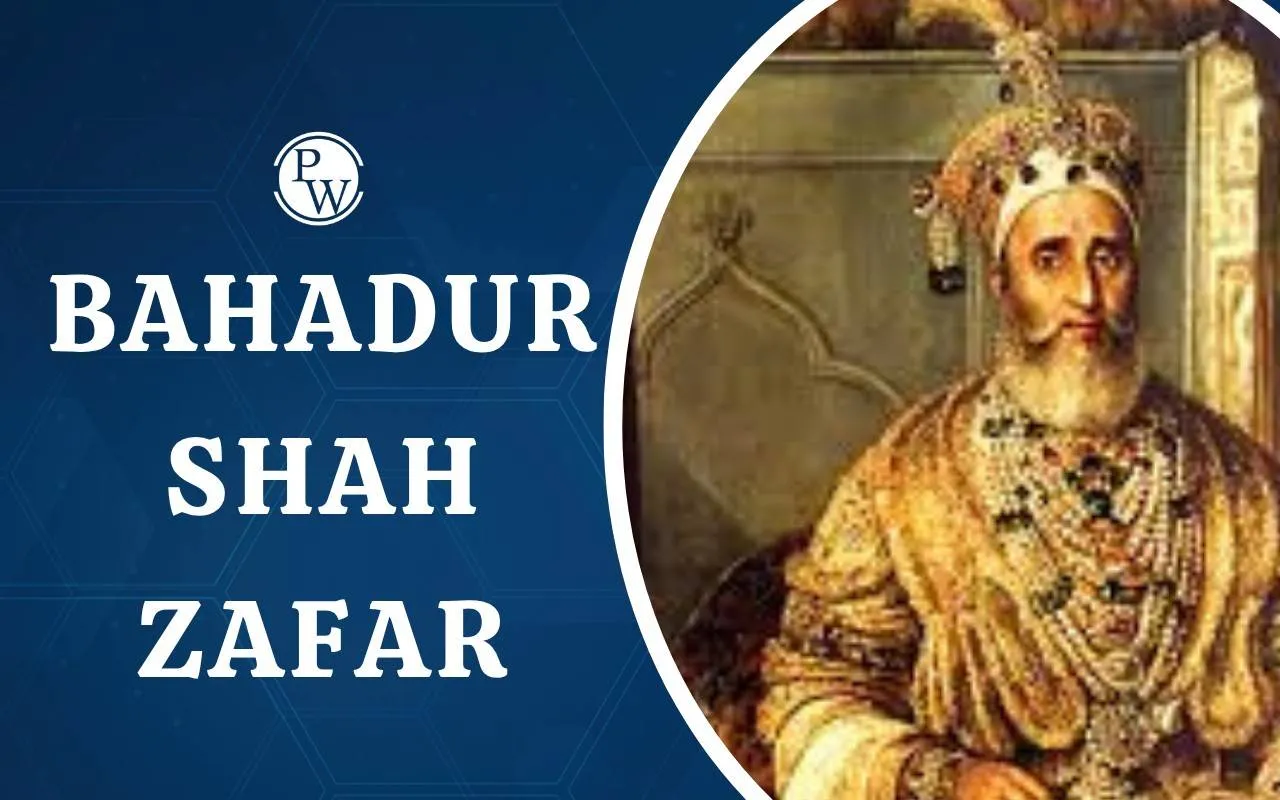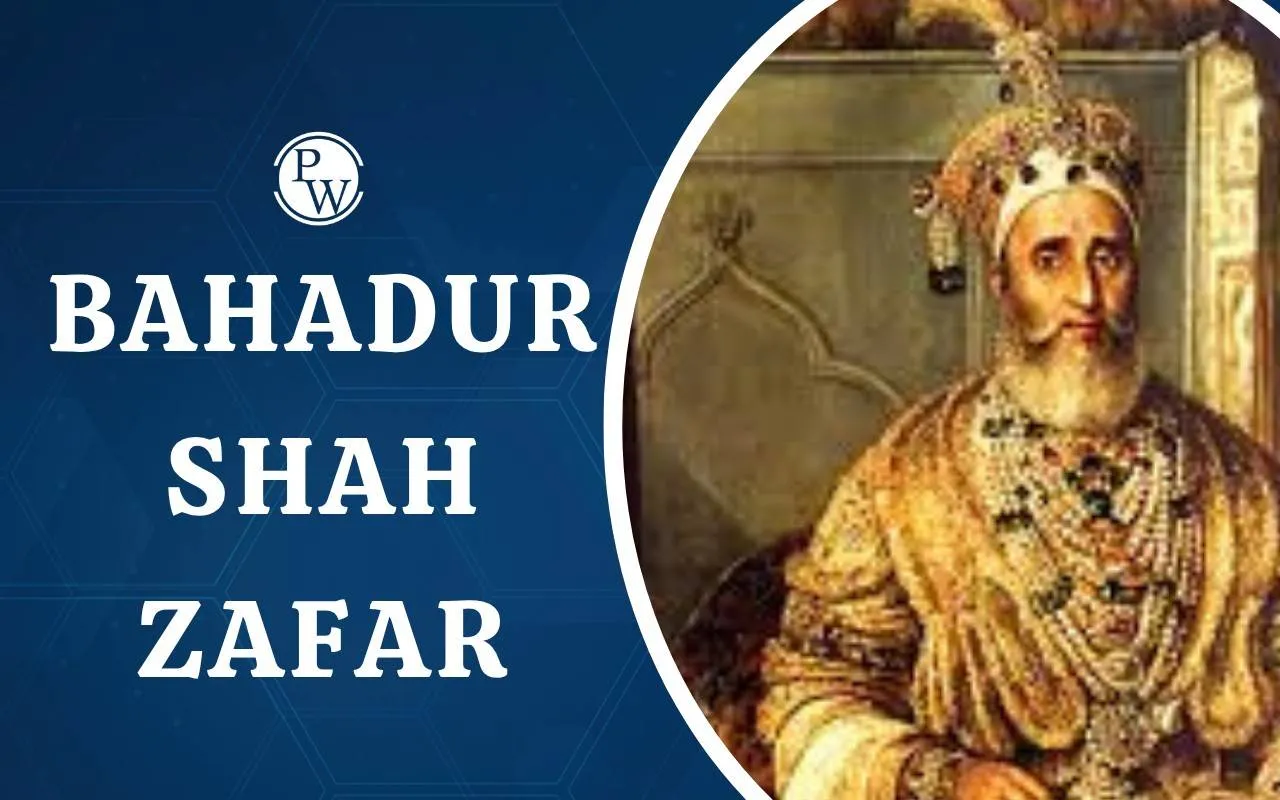

Bahadur Shah Zafar was the last Mughal emperor of India, ruling from 1837 to 1857. He was born on October 24, 1775, in Delhi. Bahadur Shah Zafar, son of Emperor Akbar Shah II and Lal Bai. Although Bahadur Shah Zafar held the title of emperor, British control had already reduced the Mughal Empire to the Red Fort and limited areas of Delhi.
Despite this lack of political power, Bahadur Shah Zafar became a powerful symbol. He represented India’s final stand for independence during the pivotal Revolt of 1857.
Bahadur Shah Zafar was also a philosopher, calligrapher, and a highly talented poet. He was known for his deep spirituality. His poetry reflected his sorrow over India’s decline. His verses captured the painful loss of the empire’s former grandeur.
Bahadur Shah Zafar full name was Bahadur Shah II, but he famously used the poetic name Zafar, meaning "Victory." He was the direct descendant of the great Mughal line of emperors. This line began with Babur many centuries earlier. This gave Bahadur Shah Zafar immense symbolic weight across the subcontinent
Bahadur Shah Zafar Biography
Bahadur Shah Zafar’s biography is one of grace, tragedy, and resilience. He ascended the throne in 1837 after the death of his father. At that time, he inherited only a fading royal title. The British East India Company controlled India’s administration, military, and revenue. This left the emperor only a ceremonial role confined within the Red Fort.
Despite his limited political power, Bahadur Shah Zafar was deeply respected as a cultural icon. He enthusiastically supported Urdu literature, music, and the Sufi traditions. He was a prolific poet himself, writing extensively under his pen name, "Zafar."
His poetic works expressed his deep yearning for peace and freedom during a period of massive political turmoil. The Bahadur Shah Zafar court became the last beacon of Mughal culture.
Bahadur Shah Zafar was strongly influenced by Sufism. His cultural court attracted famous poets of the time, including Mirza Ghalib. His verses frequently mourned the decline of the mighty empire.
Bahadur Shah Zafar’s Contribution In Revolt of 1857
The Revolt of 1857 marked a brutal turning point in the Bahadur Shah Zafar biography and his legacy. When the Indian soldiers (sepoys) rose up against the British East India Company, they quickly proclaimed Bahadur Shah Zafar as the Emperor of Hindustan. They saw him as a powerful, unifying figure for the entire rebellion.
Though reluctant at first, Zafar eventually agreed to lead the movement. Under his symbolic leadership, rebels from various regions rallied to Delhi, declaring it the centre of the uprising. His court once again became a site of political activity and hope.
However, the rebellion lacked coordination and resources. The British forces recaptured Delhi in September 1857. This brutal recapture led to mass executions of rebels and the destruction of the Mughal household. Bahadur Shah Zafar was quickly captured at Humayun's Tomb and later tried by the British on charges of treason.
His role in the 1857 revolt transformed him from a powerless monarch into a national symbol of resistance. He is remembered today as the face of India’s first war of independence.
Exile and Bahadur Shah Zafar Rangoon Jail
After his capture, Bahadur Shah Zafar was tried at the Red Fort in Delhi in January 1858. The trial formally accused Bahadur Shah Zafar of aiding the rebels and authorizing the execution of British officers, charges which he largely denied.
Following the severe trial, Bahadur Shah Zafar was exiled to Rangoon (now Yangon, Myanmar) under British custody. He travelled there with his wife, Begum Zinat Mahal, and a few remaining members of his Bahadur Shah Zafar family.
In Bahadur Shah Zafar rangoon jail, the elderly emperor lived under extremely harsh and lonely conditions. The man who once sat on the famous Peacock Throne was now confined to a small, isolated cell. He was totally deprived of all royal dignity and comfort.
Despite this terrible suffering, Bahadur Shah Zafar continued to write poetry. His final words written in exile were filled with deep sorrow, profound loss, and an unbreakable longing for his beloved homeland.
One of his most famous couplets, written during his exile in the Bahadur Shah Zafar Rangoon Jail, perfectly captures his immense pain: "Kitna hai badnaseeb Zafar dafn ke liye, Do gaz zameen bhi na mili, ku-e-yaar mein." (How unfortunate is Zafar, for burial, even two yards of land weren’t found in his beloved land.)
Bahadur Shah Zafar Died in Exile
Bahadur Shah Zafar died in Rangoon on November 7, 1862, at the age of 87. The British made sure to bury him quietly in an unmarked grave. They did this because they feared that his bahadur shah zafar tomb might become a sacred pilgrimage site for Indian patriots and nationalists.
Years later, his humble resting place was successfully rediscovered. A mausoleum was eventually built to formally honor his memory. His death marked the definite end of the Mughal dynasty. This dynasty had ruled vast areas of India for more than three centuries.
Despite his tragic end, Bahadur Shah Zafar’s death became a symbol of colonial injustice and national loss. His story inspired later generations of Indians to continue the relentless fight for freedom.
Bahadur Shah Zafar Tomb
The official Bahadur Shah Zafar Tomb is located in Rangoon (Yangon), Myanmar. Initially, the British kept his burial site a complete secret. However, in 1991, the true site was identified and was developed into a modest mausoleum and shrine.
Today, the Bahadur Shah Zafar Tomb stands as a very quiet but sacred site. It attracts visitors from across the world who come to pay their respects to the last Mughal emperor, Bahadur Shah Zafar. The shrine bears an inscription that prominently recalls his final, sorrowful verses and his heartbreaking longing for his homeland.
Bahadur Shah Zafar Tomb serves as a dual memorial. It honours the man and simultaneously reminds the world of India’s lost sovereignty and the painful, enduring legacy of colonialism.
Bahadur Shah Zafar Cultural Legacy and Poetry
Apart from his political role, Bahadur Shah Zafar was one of the last great patrons of Indo-Islamic art and literature. His diwan (collection of poems) showcases his deep emotional and spiritual reflections.
He continued the Mughal tradition of combining aesthetics, culture, and devotion. His poetic identity as Zafar immortalized him as a philosopher-king, whose words captured the despair of his time and the undying spirit of India.
Even today, his poetry is recited and remembered for its sincerity and pain, especially verses that mirror the anguish of exile and loss.
Legacy of Bahadur Shah Zafar
Bahadur Shah Zafar’s legacy extends far beyond his political reign. Though he ruled only in name, his leadership during the 1857 revolt made him a national hero and martyr in India’s freedom movement.
He symbolizes the end of an era, i.e., the fall of the Mughal Empire and the rise of British dominance. Yet, his courage, poetry, and tragic end continue to move hearts across India and beyond.
In modern India, Bahadur Shah Zafar is remembered as a poet-emperor, a reluctant rebel, and the last flicker of Mughal grandeur before the dawn of colonial rule.
